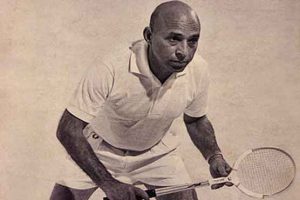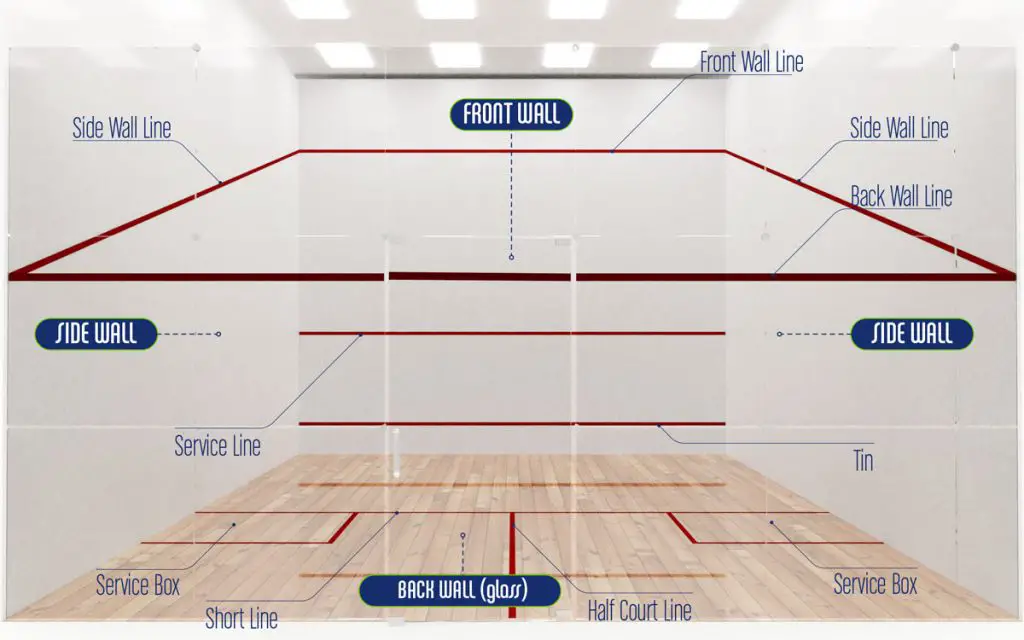[Updated on 1 January 2024] Squash is a sport that has been played for centuries. It was originally developed by British soldiers in India, who wanted to keep themselves fit during the hot summer months. Squash quickly became popular with both the British and Indian elite, but it wasn’t until the 1970s when squash gained mainstream popularity in America.
For a long time, squash was only played by the elite. But indeed, that has changed with it now being played across multiple countries globally.
Squash is no longer considered a rich man’s sport. It’s popular in some less developed countries, like Egypt and Pakistan. It doesn’t cost much money to play. The only significant barrier is access to courts; you either have to build or buy.
The availability of a squash court depending on where you are in the world. In most countries, membership in a squash club is inexpensive, and equipment requirements are minimal (you only need two things: a ball and racket). But, of course, it completely depends on how much you’re willing to spend on coaching, equipment, nutrition, etc.
Contents
Is Squash a Sport for Rich People?
The answer to above question depends on where you live because squash is a niche sport.
Although squash is prevalent in European and North American countries despite that out of 10 players in the world’s top-ranking, only Simon Rosner comes from either of those two regions. Simon Rosner, who is ranked number four globally, resides in Germany.
It implies that most squash players in North America and Europe play the sport purely for enjoyment rather than necessity. Of course, this isn’t conclusive evidence, but it seems as though everyone wants to stay healthy and be friendly with their peers.
There is nothing inherently wrong with this, and it’s even highly commendable – the creators of squash are a testament to that. It was what they initially thought when they created the sport in 19th century England: Harrow School provides ample evidence.
The Financial Costs of Squash
You may need to purchase many items in order to play squash. We will list the approximate prices of the cheapest possible, intermediate standard, and high-quality standard:
| Item | Cheap | Medium | Expensive |
| Court Shoes | $20 | $60 | $150 |
| Several Squash Balls | Borrow | $2 | $5 |
| Squash Racquet | $25 | $75 | $175 |
| Racquet Grip | – | $5 | $15 |
| Coaching | – | $15 a session | $150 a month |
| Squash Bag | $20 | $60 | $150 |
| Club Membership | $3 per match | $30 per match | $100 per match |
The quality of your equipment does not really matter when you’re just starting. A professional player can easily use beginner-level or medium-quality gear with no problem. It’s only once you reach the higher levels that differentiations emerge in lower-class courts.
You can borrow items needed for squash, from a friend or the local squash club.
If you live in the developed countries, wristbands and other accessories are just inconveniences that might set you back a bit. But, it’s a recreational activity, so it doesn’t have to break your bank account.
If you live in a developing country, you may need to think carefully about how much you can afford to spend on squash and what the benefits might be.
Some families will not be able to afford the financial risks of pursuing a sport that is not viable for them. However, there are other less complicated options available that may present fewer risks but more significant rewards.
Squash is a Sport for the Poor
Squash may not be solely a rich man’s sport, but it is undoubtedly one that very few poor people participate in. However, those who are serious about squash often make this a part of their life because they have a robust support system in place.
There is a famous anecdote about Hashim Khan, the patriarch of the Khan squash family. Hashim served in the British Army and in the Pakistani Air force and was only ever able to compete in squash domestically.
 The idea of competing in professional squash had never crossed his mind because the family finances weren’t enough to make that a reality. Consequently, he seized the opportunity to teach others about squash – and in doing so, make his contribution to humanity.
The idea of competing in professional squash had never crossed his mind because the family finances weren’t enough to make that a reality. Consequently, he seized the opportunity to teach others about squash – and in doing so, make his contribution to humanity.
Yet, it was one day established that a player he had been beating time and again made it all the way to get in the final of Britain’s Open – at the time, the most prestigious tournament in squash. To everybody’s alarm – especially those who had been coached by Hashim Khan.
Following that surprising development, those closest to Khan took the drastic step of intervening – and making personal sacrifices – to ensure that he compete at the next edition of the British Open.
The rest was history as the Khan family went on to dominate world squash for years.
However, the reality is that such stories of Hashim Khan are not as common nowadays.
These stories are more common in sports like football, where players from South America and Africa have the opportunity to reach the top of their game despite starting with little or no recognition.
One of the first lessons to take away from this is that anybody, regardless of the background, can have skills to compete in squash. The fact is, when an opportunity does present itself for a hidden talent for squash to emerge, it often excels significantly more than a player whose background and chances are simply better.
Building a Squash Court
Building a squash court may be daunting, but it is worth it.
 When you preparing for the construction of a squash court, there is usually labor required, and it will usually be the most significant proportion of the cost.
When you preparing for the construction of a squash court, there is usually labor required, and it will usually be the most significant proportion of the cost.
You will also need to buy various resources and equipment in order to put everything together.
The first and foremost consideration with putting up a squash court is to construct the prefabricated framework. This will require installation, workforce, and hours of time. Installation includes wall and ceiling panels, steel stud framing, wood or metal furring.
If you are constructing a glass enclosure for your squash court, you have the option of including fixed panels or opening sections. Movable glass walls are usually set up for the professional circuit. Those of the fixed variety is obviously the correct choice in a club and amateur setting. The scale of the glass wall also matters when picking one. You don’t need to cover the whole court with glass panels.
The doors you use at courts, as well as the storage compartments and light panels, will also have an impact on your decision. It would be best if you planned by taking these into account.
Maintenance is also an essential and time-consuming requirement for the construction of a squash court. Hence, features like slab leveling, finish trimming, grills, and components, and electrical wiring require close attention to detail.
It is important that technical experts be assigned to some of these tasks because many things could go wrong if they are not done correctly.
If you want to see a complete infographic on how to build a Squash Court click here
Conclusion
One of the most common misconceptions about squash is that it’s a sport reserved for wealthy people. This misconception couldn’t be further from the truth, and it’s even possible to get started in squash on nothing but a borrowed or secondhand racket. You’ll need to spend money on either a squash light or something like a membership at the local club. Good luck with the game, and don’t let issues with money hold you back!
Leave a Reply